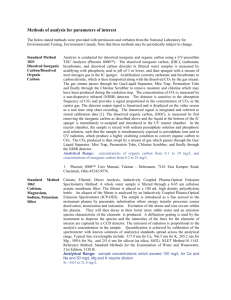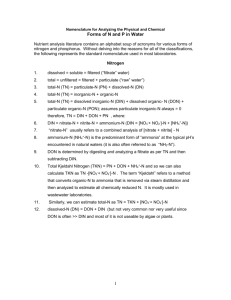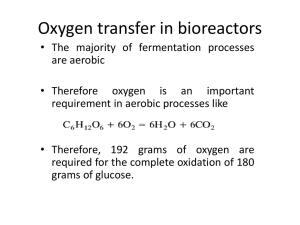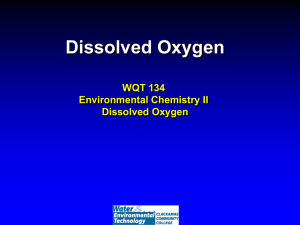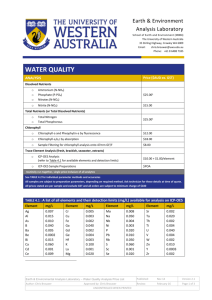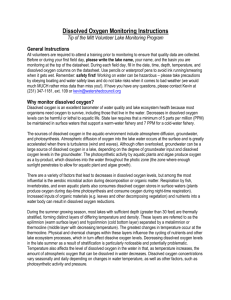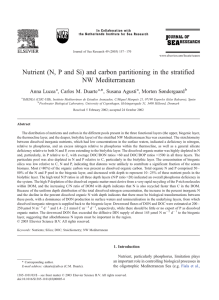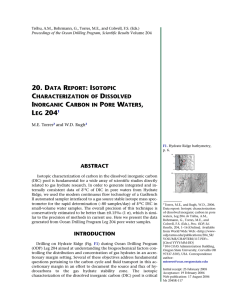quantifying the concentration and sources of dissolved carbon from
advertisement
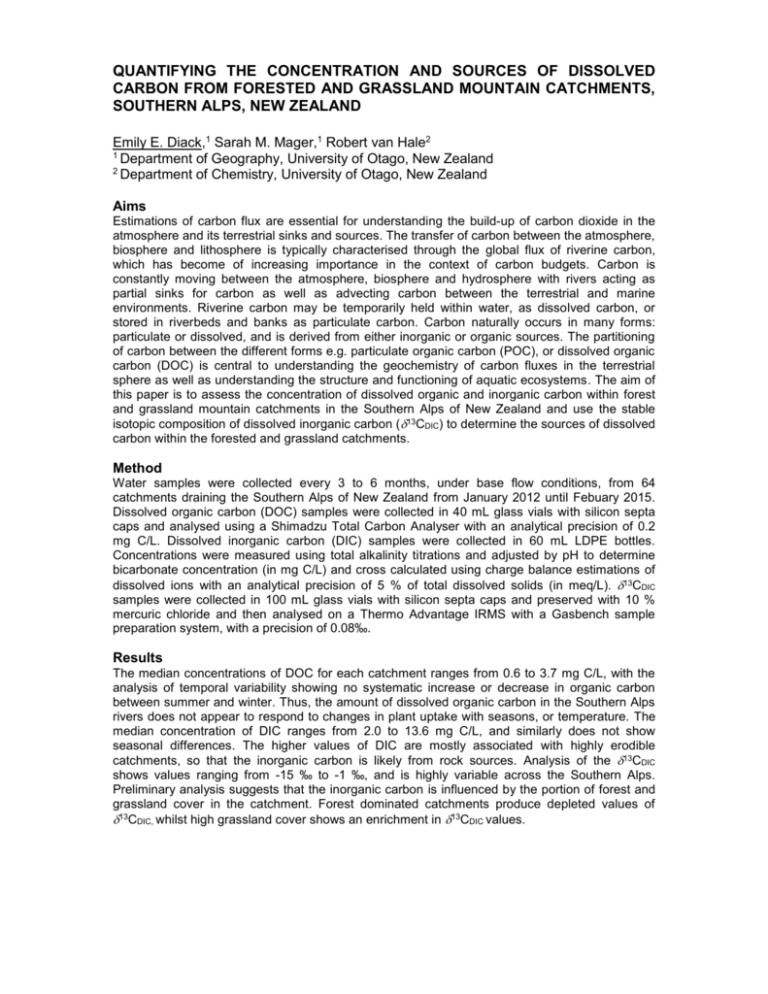
QUANTIFYING THE CONCENTRATION AND SOURCES OF DISSOLVED CARBON FROM FORESTED AND GRASSLAND MOUNTAIN CATCHMENTS, SOUTHERN ALPS, NEW ZEALAND Emily E. Diack,1 Sarah M. Mager,1 Robert van Hale2 1 Department of Geography, University of Otago, New Zealand 2 Department of Chemistry, University of Otago, New Zealand Aims Estimations of carbon flux are essential for understanding the build-up of carbon dioxide in the atmosphere and its terrestrial sinks and sources. The transfer of carbon between the atmosphere, biosphere and lithosphere is typically characterised through the global flux of riverine carbon, which has become of increasing importance in the context of carbon budgets. Carbon is constantly moving between the atmosphere, biosphere and hydrosphere with rivers acting as partial sinks for carbon as well as advecting carbon between the terrestrial and marine environments. Riverine carbon may be temporarily held within water, as dissolved carbon, or stored in riverbeds and banks as particulate carbon. Carbon naturally occurs in many forms: particulate or dissolved, and is derived from either inorganic or organic sources. The partitioning of carbon between the different forms e.g. particulate organic carbon (POC), or dissolved organic carbon (DOC) is central to understanding the geochemistry of carbon fluxes in the terrestrial sphere as well as understanding the structure and functioning of aquatic ecosystems. The aim of this paper is to assess the concentration of dissolved organic and inorganic carbon within forest and grassland mountain catchments in the Southern Alps of New Zealand and use the stable isotopic composition of dissolved inorganic carbon (13CDIC) to determine the sources of dissolved carbon within the forested and grassland catchments. Method Water samples were collected every 3 to 6 months, under base flow conditions, from 64 catchments draining the Southern Alps of New Zealand from January 2012 until Febuary 2015. Dissolved organic carbon (DOC) samples were collected in 40 mL glass vials with silicon septa caps and analysed using a Shimadzu Total Carbon Analyser with an analytical precision of 0.2 mg C/L. Dissolved inorganic carbon (DIC) samples were collected in 60 mL LDPE bottles. Concentrations were measured using total alkalinity titrations and adjusted by pH to determine bicarbonate concentration (in mg C/L) and cross calculated using charge balance estimations of dissolved ions with an analytical precision of 5 % of total dissolved solids (in meq/L). 13CDIC samples were collected in 100 mL glass vials with silicon septa caps and preserved with 10 % mercuric chloride and then analysed on a Thermo Advantage IRMS with a Gasbench sample preparation system, with a precision of 0.08‰. Results The median concentrations of DOC for each catchment ranges from 0.6 to 3.7 mg C/L, with the analysis of temporal variability showing no systematic increase or decrease in organic carbon between summer and winter. Thus, the amount of dissolved organic carbon in the Southern Alps rivers does not appear to respond to changes in plant uptake with seasons, or temperature. The median concentration of DIC ranges from 2.0 to 13.6 mg C/L, and similarly does not show seasonal differences. The higher values of DIC are mostly associated with highly erodible catchments, so that the inorganic carbon is likely from rock sources. Analysis of the 13CDIC shows values ranging from -15 ‰ to -1 ‰, and is highly variable across the Southern Alps. Preliminary analysis suggests that the inorganic carbon is influenced by the portion of forest and grassland cover in the catchment. Forest dominated catchments produce depleted values of 13CDIC, whilst high grassland cover shows an enrichment in 13CDIC values.

